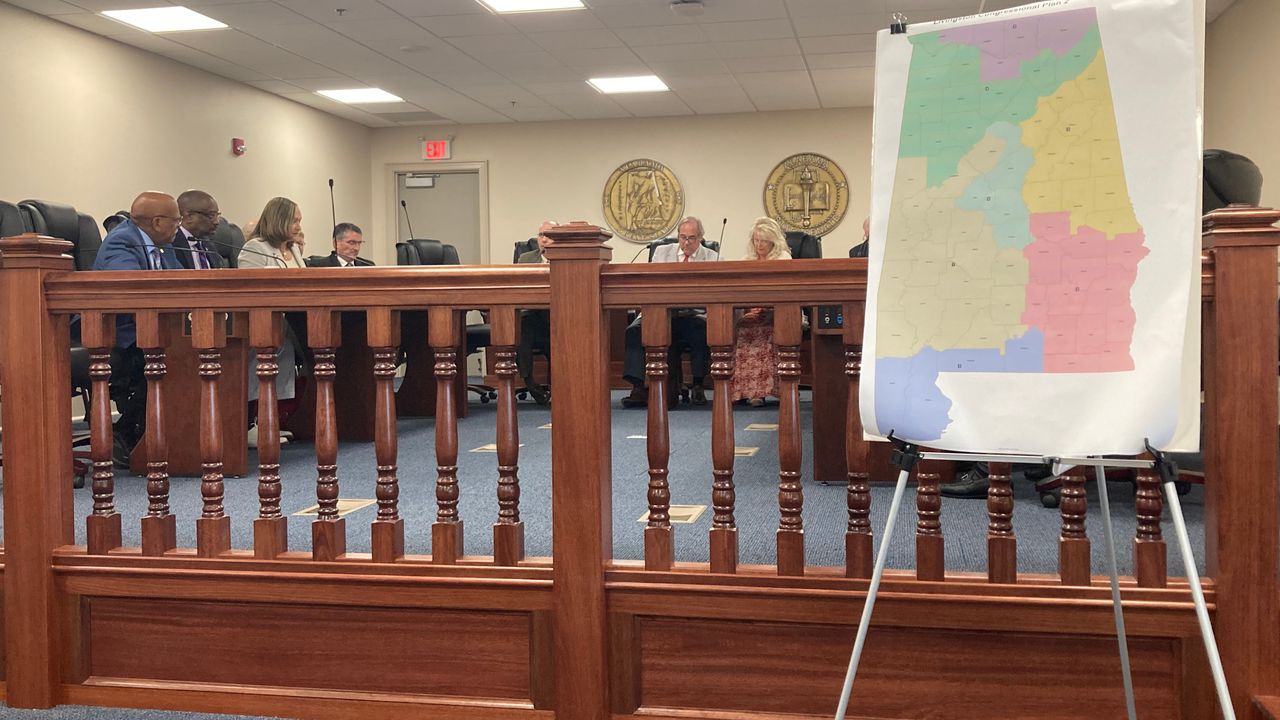Redistricting: Deadline arrives for Alabama congressional map
Under guidance from a federal court to create a second majority Black congressional district “or something quite close to it,” the Alabama Legislature will try on Friday to approve a new district map.
During a special session that started Monday, the House of Representatives and the Senate have passed two maps. One of those, or a new version, will have to win final approval Friday to meet the deadline set by the court.
Democrats oppose the plans that the Republican majority has approved. Neither would create a second majority Black district. Both would leave District 7, which is mostly in west Alabama, as the only majority Black district out of seven in a state where one-fourth of residents are Black. District 7 is represented by Congresswoman Terri Sewell, D-Birmingham.
The House passed a plan by Speaker Pro Tem Chris Pringle, R-Mobile, that would raise the Black voting age population in District 2 from 30% to 42%. The Senate passed a plan by Sen. Steve Livingston, R-Scottsboro, that would increase the Black voting age population in District 2 to 38%.
District 2 is represented by Congressman Barry Moore, R-Enterprise.
Pringle and Livingston say their plan would comply with the court’s order and fix a likely violation of the Voting Rights Act by creating a second district where Black voters would have an opportunity to elect a candidate of their choice.
Democrats oppose the plans and say they do not achieve what the court ordered.
In June, the U.S. Supreme Court affirmed a ruling by a three-judge federal district court, which found that Alabama’s current map most likely violates the Voting Rights Act. The district court said the Voting Rights Act does not guarantee Blacks a district map proportional to their share of the state’s population. But the judges, including two President Trump appointees, said the Black population in Alabama is large enough and geographically compact enough to draw a reasonably configured second Black district.
They said considering other factors, including the racially polarized voters in Alabama, Black voters have less of an opportunity to elect a candidate of their choice, which violates Section 2 of the Voting Rights Act.
Pringle is presenting his bill again on the House floor Friday morning. The first Democrat to speak was Rep. Sam Jones, D-Mobile, who took note of the language in the court order.
“There’s a difference between close and quite close,” Jones said, and walked over to stand near Pringle to emphasize his point.
“The standard was quite close, not just close,” Jones said.
Rep. Chris England, D-Tuscaloosa, said the Supreme Court ruling gave the state a chance to make history and embrace a map that follows the Supreme Court order and correct the voting rights violation.
“Instead, what we decided to do was the opposite,” England said.
England a sponsored a bill for a map developed by the plaintiffs whose arguments that the current map violates the Voting Rights Act prevailed at the Supreme Court. It would create a second majority Black district by raising the Black voting age population in District 2 to slightly more than 50%. But Republicans have rejected that plan.
England urged the House not to continue what he said Alabama has done for a hundred years.
“That is us thumbing our nose at the federal courts or the federal government and they end up making us do what we should have done in the first place,” England said.
Rep. Phillip Ensler, D-Montgomery, asked Pringle why not approve a map that is majority Black or closer to it than the 42% in Pringle’s map.
“Why even risk having a court saying we got it wrong?” Ensler said.
Pringle said again that he believes his map makes the 2nd District an opportunity district for Black voters.
This story will be updated.
